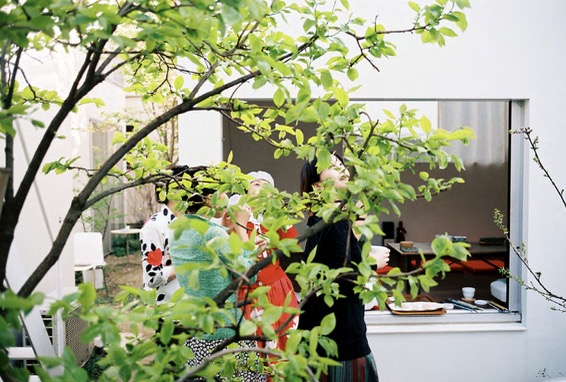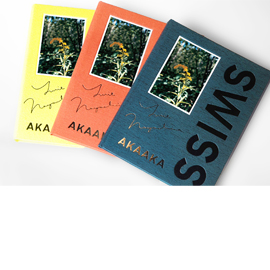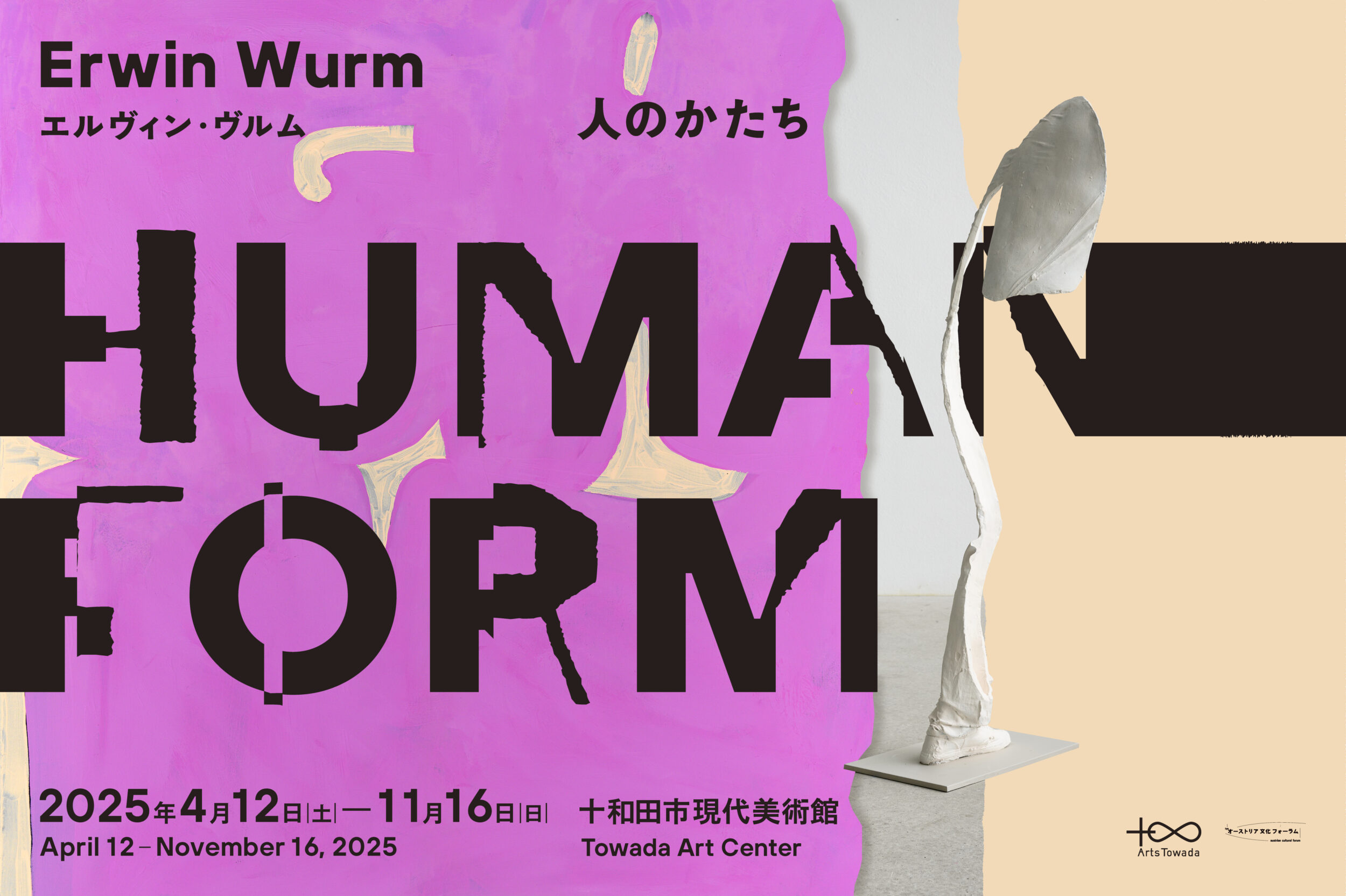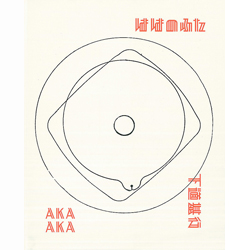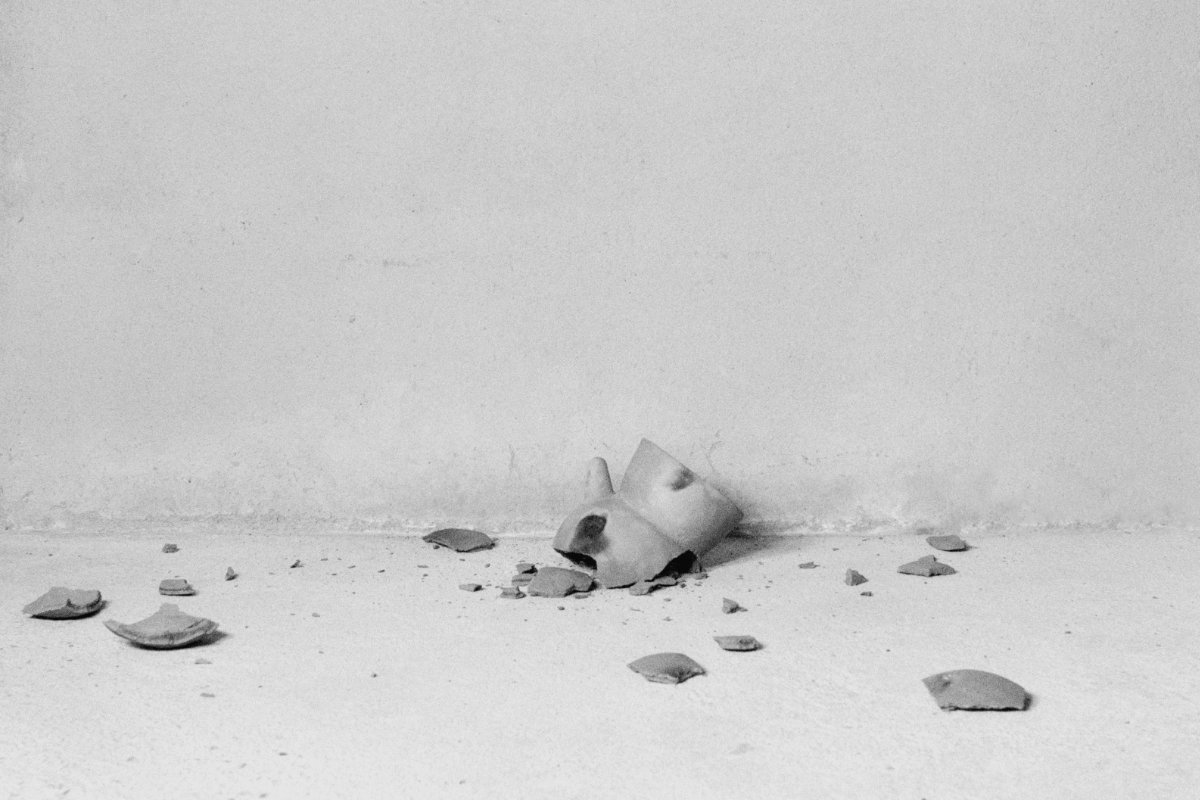



『オランダ × 千葉 撮る、物語る』
サラ・ファン・ライ&ダヴィット・ファン・デル・レーウ × 清水裕貴
Book Design:上田英司、叶野夢(シルシ)発行:赤々舎 Size:H257mm × W182mm Page:224 pages Binding:Softcover, double-sided jacket Published in November 2025 ISBN:978-4-86541-216-1 |
¥ 4,000+tax
国内送料無料! お支払い方法は、PayPal、PayPay、Paidy 銀行振込、郵便振替、クレジットカード支払いよりお選び頂けます。 |
|---|
About Book
眺めの反照、眺めの継承
The Netherlands × Chiba
Taking Photographs, Telling Stories
Sarah van Rij & David van der Leeuw × Yuki Shimizu
The work of Dutch photographers Sarah van Rij and David van der Leeuw has recently garnered a lot of attention, through their unique photographic expression that utilizes reflections and shadows effectively to project dreamlike landscapes with vague outlines. They walk around urban centers like flâneurs and, in their words, seek "to capture the unstaged and almost undefinable elements of the city." These elements are "the vague silhouettes of people, or the vast amounts of colors, abstract shapes, and poetic rhythms the city itself consists of," which consequently evoke "the essence of a city."
The subjects that van Rij and van der Leeuw discover "incidentally" are given new lives as entirely different images through their outstanding sense of color and framing. After spending their teenage years at the beginning of the 2000s, they developed the incredible sensitivity needed to construct images from their daily life which is overflowing with pictures: they truly are children of the digital era.
The fragments of city memories and historical traces evoked in their work are often deeply entwined with cinematic elements, especially in the influence they profess from American filmmaker John Cassavetes. In the series Metropolitan Melancholia (2019-2022), which they worked on in New York during the Covid pandemic, something like a story may arise from the depth of an abstract image, as though it were a scene from a movie. This "narrative" inclination establishes the impression that the numerous films set in the city provided a subconscious influence.
Their attempts to construct new images of streets developed further in Still Life, a project that began under lockdown during the pandemic, which was shot indoors, in a controlled environment. Here, too, reflections on panes of glass or shadows on the wall establish multi-layered images.
The self-portraits in these still lifes leans on a rich lineage of art that goes back to the old Dutch school. In paintings, figures reflected on items were a mark of the fine application of techniques of depiction by skilled artists, yet the feeling of attraction to what you can see and the desire to express every visible thing equally can be said to have been inherited to this day. The traces of the artists themselves in the work compel us to be drawn into their art world.
-----------------------------------------------------------------
Moving back and forth between two modes of expression -photography and novels - Yuki Shimizu works with a unique production style in which she carefully researches the history and traditions of a place and, while unveiling its past, builds a fictional world in photographs and words. This story originated from an old photographic archive collection that remains in the house of the Tojo-tei in Matsudo, a designated important national cultural property that was built about 140 years ago.
The Tojo-tei is the location where Akitake Tokugawa (1852-1910), brother of the last Shogun of the Edo period, Yoshinobu Tokugawa (1837-1913) and 11th head of the Mito domain, spent half of his lifetime after retiring in 1884 at the age of 29. Basing himself there, Akitake enjoyed various activities such as hunting, photography, and cycling.
He especially devoted himself to photography, setting up a dark room in the house and mixing the development solution to process films himself.
More than 1,300 photographs he took in the six years between 1903 and 1909 are collected in the house.
A vast amount of documents were left by Akitake, who was an outstanding record-keeper, including photoshoot memos, travel journals, and diaries. These are studied in minute detail and carefully tied to pictures by "Curator K", who attempts to illuminate traces of the paths Akitake took in life, leading Shimizu to follow the gaze of Akitake at Tojo House, in the surrounding pastoral landscape, and out to the sea of the Inage area.
Photographic technology brought to Japan via the Netherlands at the end of the Edo period was an epoch-making innovation that realized the human desire to capture the scenes they see, and was rapidly adopted in the current of modernization during the Meiji era. At the same time, photography as a mode of artistic expression was crossing paths with a movement of realism in modern painters who were attempting to depict reality as it was, and it began searching out its own expression.
Shimizu describes and photographs landscapes (or views) that change through time, examining the acts of humans who try to retain the figure of how things once were, and recognizing the fact that painting and photography are both mediums that, if anything, deteriorate over time and become lost. Shimizu's technique of utilizing negatives that were damaged in seawater in works like Half Dreaming Glass (2022) or Surfacing (2024) is a way of marking the passage of time that is impossible to resist on real landscapes.
How will accumulations of past records be handed down to the future? The words and photographs of Shimizu, weaving back and forth between reality and fiction, establish a grand installation that connects the past and present, transcending gaps of time and space.
-----------------------------------------------------------------
Chiba prefecture has a long history of cherishing its relationship with the Kingdom of the Netherlands, since the Sakura clan engaged in Dutch studies during the Edo period. This relationship was present during the Tokyo 2020 Olympic Games four years ago, when the prefecture hosted the Dutch Olympic team.
We hope that you enjoy the stories that Sarah van Rij & David van der Leeuw × Yuki Shimizu have created through photography. Perhaps they may lead to the creation of new stories within you, as an readers, that were not part of the artists' original intentions. We believe the artists are excited for that future too.
Related Exhibitions
|
「オランダ × 千葉 撮る、物語る」 会期:2025年11月15日(土)〜2026年1月18日(日) 時間:9:00〜16:30(最終入館30分前まで) 会場:千葉県立美術館(千葉市中央区 中央港1-10-1) 休館:月曜日(月が祝日の場合は翌日。1月12日(月)は開館) 12月28日(日)〜1月4日(日)、1月13日(火) アーティストトーク 清水裕貴 × 小寺瑛広(松戸市戸定歴史館 研究員) 日時:12月20日(土)14:00~15:30 会場:千葉県立美術館 講堂 定員:180名(当日受付、先着順) |

|
|
刊行記念トークイベント 清水裕貴 × 大竹昭子 日時: 2025年12月23日(火) 19:00〜20:30 会場: 青山ブックセンター本店 大教室(東京都渋谷区神宮前5-53-67 B2F) 参加:1,650円(税込)、定員100名 本図録の刊行を記念し、出展作家である、写真家、小説家の清水裕貴氏と、ジャンルを越境して執筆活躍をする作家の大竹昭子氏によるトークイベントを開催します。 清水氏が、松戸市戸定歴史館にある古写真のコレクションに着想を得て展開する「眺めの継承」と題する壮大なインスタレーションを出発点とし、「撮ること」と「物語ること」はどのように重なりうるのか、写真と言葉の関係を語り合います。 |

|
|
「オランダ × 千葉 撮る、物語る―サラ・ファン・ライ&ダヴィット・ファン・デル・レーウ × 清水裕貴」展 開催記念 清水裕貴「海は地下室に眠る」 会期:2026年1月9日(金)〜1月24日(土) 時間:13:00〜19:00 会場:LAG(LIVE ART GALLERY)東京都渋谷区神宮前2-4-11 1F 休館:日、月、祝 清水裕貴 × 畑井恵(水戸芸術館現代美術センター学芸員) |

|
Artist Information
サラ・ファン・ライ&ダヴィット・ファン・デル・レーウ
アムステルダムとパリを拠点に活動するオランダ出身の写真家。 2人はパートナーであり、ユニットとしても個人としても活動し、考え抜かれたフレーミングと構図によって、シュルレアリスムの系譜に通じる作品を創り出している。
ファッションブランドやエディトリアルのコミッションワークも手がける。 2023年に2人の初の写真集『Metropolitan Melancholia』をKOMINEKより出版。同年にサラ・ファン・ライによるルイ・ヴィトン フォトブックシリーズ『ファッション・アイ、ソウル』も刊行。 2025年12月より、サラ・ファン・ライにとって初となる美術館での個展を、パリのヨーロッパ写真美術館で開催予定。
Sarah van Rij & David van der Leeuw
Sarah van Rij and David van der Leeuw are a Dutch photography duo based in Amsterdam and Paris. As partners in both life and work, they capture images evoking surrealist works through their meticulous approach to framing and composition.
They also undertake commissioned work for fashion brands and editorials.Their first photobook, Metropolitan Melancholia, was published by KOMINEK in 2023. The same year also saw the launch of Sarah van Rij's contribution to the Louis Vuitton Photobook Series:
Fashion Eye Seoul. Her first solo museum exhibition is scheduled to open at the Maison Européenne de la Photographie in Paris in December 2025.
清水裕貴
千葉県生まれ。2007年、武蔵野美術大学映像学科卒業。2011年、第5回写真「1_WALL」グランプリ受賞。2016年、第18回三木淳賞受賞。小説では2018年、新潮社R18文学賞大賞受賞。土地の歴史や伝承のリサーチをベースにして、写真と言葉を組み合わせて風景を表現している。主な出版物に、小説「ここは夜の水のほとり」新潮社(2019)、小説「海は地下室に眠る」KADOKAWA(2023)、写真集「岸』赤々舎(2023)。主な個展に「眠れば潮」(PURPLE、2023)、「浮上」(PGI、2024)、主なグループ展に、「千葉ゆかりの作家展百年稲子の海」(千葉市民ギャラリー・いなげ/旧神谷博兵衛稲毛別荘、2021)、「とある美術館の夏休み」(千葉市美術館、2022)、「MOT アニュアル2024こうふくのしま」(東京都現代美術館、2024)がある。
Yuki Shimizu
Born in Chiba, Yuki Shimizu graduated from the Department of Imaging Arts and Sciences at Musashino Art University in 2007. She won the Grand Prize at the 5th '1_WALL' Photography Competition in 2011 and the 18th Jun Miki Award in 2016. Her literary work won the Grand Prize at the 2018 R-18 Literary Award by Shinchosha.
Shimizu combines photography and text to create landscapes inspired by her research into local history and folklore. Her major publications include the novels Koko wa Yoru no Mizu no Hotori (Here at the Water's Edge at Night, Shinchosha, 2019) and Umi wa Chikasitsu ni Nemuru (The Sea in the Cellar, KADOKAWA, 2023), as well as the photobook Shore (AKAAKA, 2023). Exhibitions featuring this artist include 'Artists Related to Chiba: A Century of Glass Sea' (Chiba Citizen's Gallery Inage / Former Holiday House of Dembei Kamiya, 2021), 'Summer Vacation at a Certain Art Museum' (Chiba City Museum of Art, 2022), and 'MOT ANNUAL 2024 on the Imagined Terrain' (Museum of Contemporary Art Tokyo, 2024).
Related Items

|

|
|
 |
|
|---|
|
|

|

|
|
|---|







